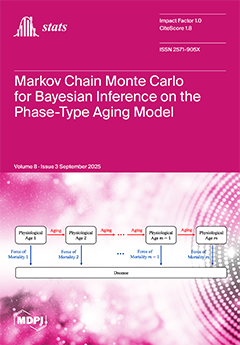Penalized regression methods are widely used for variable selection. Non-negative garrote (NNG) was one of the earliest methods to combine variable selection with shrinkage of regression coefficients, followed by lasso. About a decade after the introduction of lasso, adaptive lasso (ALASSO) was proposed
[...] Read more.
Penalized regression methods are widely used for variable selection. Non-negative garrote (NNG) was one of the earliest methods to combine variable selection with shrinkage of regression coefficients, followed by lasso. About a decade after the introduction of lasso, adaptive lasso (ALASSO) was proposed to address lasso’s limitations. ALASSO has two tuning parameters (
and
), and its penalty resembles that of NNG when
, though NNG imposes additional constraints. Given ALASSO’s greater flexibility, which may increase instability, this study investigates whether NNG provides any practical benefit or can be replaced by ALASSO. We conducted simulations in both low- and high-dimensional settings to compare selected variables, coefficient estimates, and prediction accuracy. Ordinary least squares and ridge estimates were used as initial estimates. NNG and ALASSO (
) showed similar performance in low-dimensional settings with low correlation, large samples, and moderate to high
. However, under high correlation, small samples, and low
, their selected variables and estimates differed, though prediction accuracy remained comparable. When
, the differences between NNG and ALASSO became more pronounced, with ALASSO generally performing better. Assuming linear relationships between predictors and the outcome, the results suggest that NNG may offer no practical advantage over ALASSO. The
parameter in ALASSO allows for adaptability to model complexity, making ALASSO a more flexible and practical alternative to NNG.
Full article





